Agricultural antibiotics
Agricultural antibiotics are antibiotics used for controlling plant diseases in agriculture. Antibiotics are substances produced by microorganisms and are usually extracted from the metabolites of microorganisms. Some of them can also be artificially synthesized. It can inhibit or kill other microbes, and some can also kill pesticides and plants.
A brief history
The application of antibiotics for medicine began in 1928 when Afleming (The United Kingdom) discovered penicillin. Because penicillin has excellent effect on killing some bacteria in the human body, stimulating people to vigorously seek new antibiotics. Soon people had further found chloramphenicol, chlortetracycline, streptomycin and other antibiotics. On the application of antibiotics, in 1940s, people had begun the related study outside the medical field. In 1944, Brown and Boyle had applied penicillin for effectively treating the crown gall disease caused by several bacteria. In 1946, Upjohn (US) has found that antibiotic cycloheximide has high anti-fungi activity against the fungi on plant. Then it had been further found that streptomycin, chloramphenicol also had excellent effects on the treatment of some bacteria diseases and fungi diseases on plant, making people realize that antibiotics can prevent and treat plant diseases.
So far, although there about 900 kind of antibiotic whose chemical structures have been defined, due to the instability, phytotoxicity, high cost or high toxicity on warm-blooded animal, there are only more than 10 types of antibiotic has achieved practical value in agriculture. Japan has made significant progress in the study of agricultural antibiotics. In 1955, people in Japan had first discovered blasticidin and later in 1963 Hokko Chemical Industry Company (Japan) had successfully developed kasugamycin. Both these two antibiotic has been large-scale used for the prevention and treatment of rice blast control. The more efficient polyoxin developed by Hokko Chemical Industry Company in 1964 and validamycin developed by Takeda Pharmaceutical Company in 1972 has also been widely used in the control of rice Rhizoctonia solani. In the end of 1970s, Takeda Pharmaceutical Company had further successfully developed midiomycin which was effective in the control of the powdery mildew of cucumber, melon, rose, strawberry, tomato, barley, tobacco, grapes, peas and apple. China, after Japan, had successively isolated and developed antibiotics which are similar or the same as blasticidin, kasugamycin, polyoxin and validamycin of Japan, namely the Chinese blasticidin, kasugamycin, and polyoxin as well as Jinggangmycin. In 1982, the plant protection institute of Jilin Academy of Agricultural Sciences had further successfully developed the gongzhulingmycin, mainly for the prevention and treatment of sorghum covered smut, covered smut, Tilletia foetida, stinking bunt and Ustilago crameri.
Variety
Bacteria, fungi and actinomycetes all can produce antibiotics, among which actinomycetes produce the most kinds of antibiotics. Many important agricultural antibiotics being widely used currently are all isolated from the Streptomyces genus of actinomycetes. Most of these microbial metabolites have very complex chemical structure with some of them being not a single compound but being the mixture containing a plurality of components or homologues. In order to overcome the drawbacks of certain metabolites: low stability, phytotoxicity to plants and being highly toxic to warm-blooded animals as well as for the convenience of processing and application, some kinds of commercialized species doesn’t exist alone as the original isolated version but are made into various salts. For example, polymyxin belongs to peptide pyrimidine nucleoside compound with its mainly components being polymyxin A (Polyoxin A) and polymyxin B (Polyoxin B), but in fact it is comprised of 14 kinds of homologues from A to N. Jinggangmycin belongs to glucosidase (also known as cyclic amino alcohols) wherein A is the highest active ingredient, but it consists of six components. Gongzhulingmycin is comprised of dehydrated cycloheximide, isocycloheximide, nystatin, neomycin and benzoic acid. The chemical structure of blasticidin and kasugamycin belongs to a complex base. Their goods are all in the form of benzylamino benzene sulfonic acid salt and hydrochloric acid salt.
Performance
1 the original drugs of the commercialized agricultural antibiotics are solid; the property is generally relatively stable with low or moderate toxicity to warm-blooded animals. Existing antibiotics are mainly bactericidal or fungicides, with few species of antibiotics have insecticidal and herbicidal effect while fungicides are dominated.
2 high efficacy; they can achieve satisfied prevention and treatment efficacy upon being administered at very low concentrations. The drug concentration of Gongzhulingmycin used for seed treatment is 50 mg / liter. Spraying 8 kilograms of this drug solution per 100 kg of seed is enough for achieving excellent efficacy of controlling the grain smut. Effective spraying concentrations of other agents are generally 20 to 50 microgram / kg;
3 excellent systematic therapeutic activity. The pharmaceutical agents can be easily absorbed by plants and transfer in the body with strong resistance to the rain erosion ability. Raining occurring at three to five hours after spraying generally has no negative effect on the drug efficacy;
4 selectivity;
5 due to short residue duration period and low usage concentration, it is safe for human, animal and plant. The method of administration for the agent, in addition to Gongzhulingmycin which is used for seed treatment, all applies spraying for other kinds of antibiotics.
The processed formulations of such agents are mainly in the form of low concentrations wettable powder (2-6%) and powder (0.16 to 3%), but sometimes also processed into a low concentration of EC (2% to 10%) and liquid (2 to 5%). 6 same as chemical fungicides, agricultural antibiotics have various kinds of mechanism of action which can be generally divided into three categories suppressing the energy production, interfering with the biosynthesis and destroying the cell structure. Streptomycin, oxytetracycline and chlortetracycline can all inhibit the biological oxidation function, interfering with the pathogens respiration, thus leading to the energy insufficiency for sustaining life. Cycloheximide, blasticidin interfere with the binding of RNA to amino acids, thus inhibiting the protein synthesis. Polyoxin inhibit the activity of the uridine phosphate-N-acetylglucosamine transferase, making glucosamine being not able to enter the cell wall for chitin biosynthesis. Jinggangmycin causes abnormal mycelium branching.
- Structure:
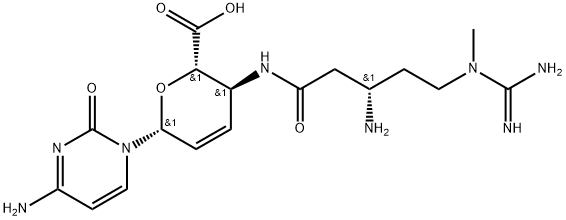
- Chemical Name:BLASTICIDIN S
- CAS:2079-00-7
- MF:C17H26N8O5
- Structure:
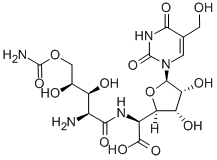
- Chemical Name:POLYOXIN B
- CAS:19396-06-6
- MF:C17H25N5O13
- Structure:
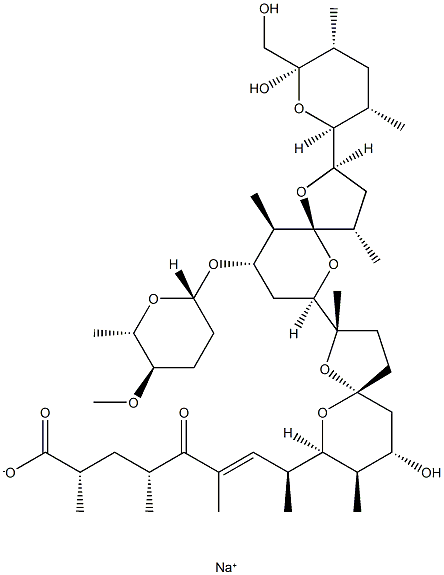
- Chemical Name:Dianemycin 1-sodium salt
- CAS:65101-87-3
- MF:C47H77NaO14
- Structure:
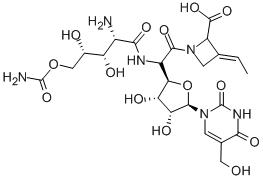
- Chemical Name:POLYOXIN A
- CAS:19396-03-3
- MF:C23H32N6O14
- Structure:
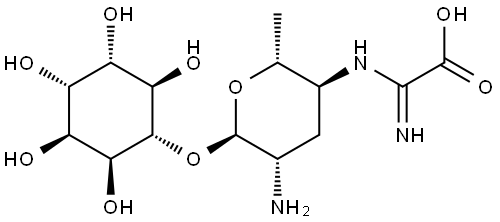
- Chemical Name:KASUGAMYCIN
- CAS:6980-18-3
- MF:C14H25N3O9
- Structure:
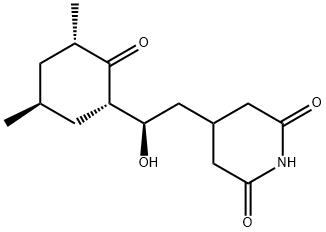
- Chemical Name:Actidione
- CAS:66-81-9
- MF:C15H23NO4